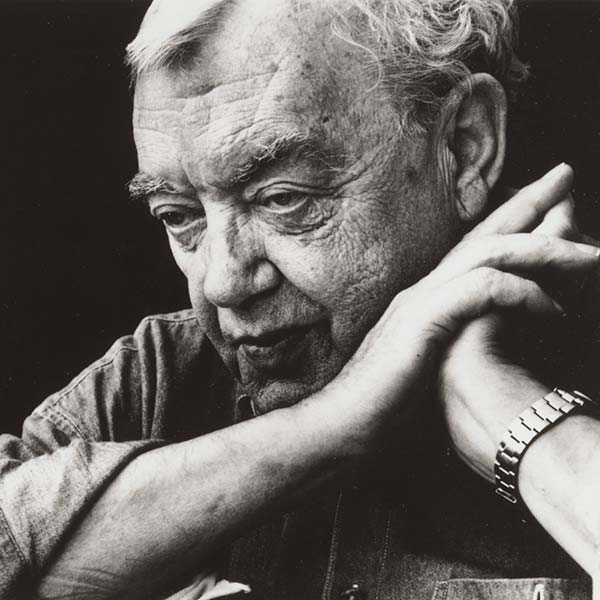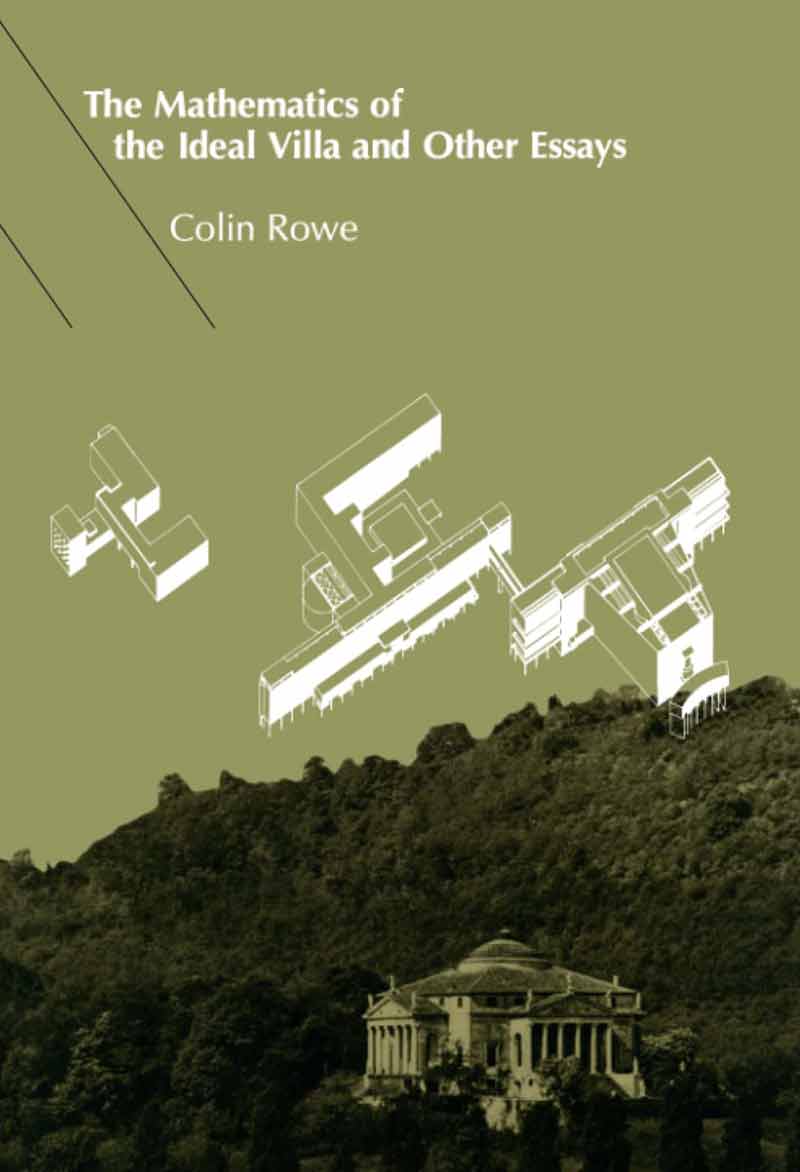
Image Copyright Cornell University Library

The Mathematics of the Ideal Villa and Other Essays by Colin Rowe
After graduating from Liverpool in 1945, Rowe was awarded a junior fellowship at the Warburg Institute where with Rudolf Wittkower as tutor he wrote a thesis on 'The theoretical drawings of Inigo Jones: their sources and scope'. His interest was primarily that of an architect who saw in Palladio's use of harmonic proportions a series of clues that could be exploited to imbue all plans with intellectual qualities. Rowe's first essay explored this further. In 'The Mathematics of the Ideal Villa', published in the Architectural Review for 1947, he superimposed Le Corbusier on Palladio, the boldness of his approach brought him immediate recognition as a teacher and scholar of outstanding originality. He became a lecturer at Liverpool University, where he supervised and strongly influenced James Stirling - an influence acknowledged by Stirling. His second essay, 'Mannerism and Modern Architecture', published in the Architectural Review for 1950, built upon his growing reputation as a theorist.
In 1951 Rowe was awarded a Smith-Mundt/Fulbright scholarship for study in the USA, and at Yale University he worked with Henry-Russell Hitchcock. Hitchcock raised his interest in the routes by which modernism had developed out of nineteenth-century architecture. Hitchcock also passed onto Rowe his own enthusiasm for walking in the city, whether it was New York or London, examining the evidence as it presented itself to the eye. This immediacy contributed to Rowe's appeal, and was represented in both his writing and lecturing style as a characteristically conversational tone.
In 1952–3 Rowe travelled in the United States and Mexico. He was attracted by the openness of American society and the effect this freer less historically bound society had on the interpretation of architectural models imported from Europe. In 1953 he accepted a post at the University of Texas, Austin, where he taught in collaboration with Bernhard Hoesli, from Switzerland. Within the space of just five semesters there he revolutionized the teaching of architectural design by bringing in European models. In addition, he also drew the American’s attention to their own heritage through his praise for the city of Lockhart in Texas as well as pointing to the dynamic quality of American settlements, and the American revitalization of the classical.
Between 1958 and 1962 Rowe was a lecturer at Cambridge University School of Architecture, where among other things he became adviser to Peter Eisenman and encouraged him to study Terragni. In 1962 Rowe returned to America, and from then until his retirement he taught at Cornell University. At Cornell his influence was directed at city planning, not towards management, but towards exploring that margin where city form and architectural form act together to create a sense of place and occasion. At Cornell, he taught and influenced several generations of students with regard to the social nature of city space. His pioneering theories would eventually be taken up by less original teachers and theorists to form a new orthodoxy, the inspiration for what became known as 'new urbanism'. This groundbreaking approach would, as his DNB biographer notes, be exemplified.
'In the Manhattan project of 1966, organized by Peter Eisenman's Institute for Architecture and Urban Studies, Rowe suggested that the city would be better approached not as a series of individual object buildings, but as a basic ground -the city fabric - like a field of standing corn waiting to have spaces made in it. His approach was influenced by his experience of Italian cities, where the tradition of the passeggiata continued to represent the popular appeal of city space. This acute sense of the space as social conferred on Rowe's view of architecture an immediacy that distinguished it from the traditional art historical approach.'
Through the employment of a unique and highly personalized method of analysing architecture, Rowe saw architecture of any period as capable of being scrutinized for its potential as idea. In this approach architecture was the embodiment, in an inert form, of a complex set of thoughts and feelings. Typically a formulator, rather than an adopter of theory, Rowe drew attention to the psychological dimension in architectural form. In doing so he helped changed the course of architecture in both England and America.
In 1981 Rowe was awarded the American Institute of Architects' Topaz award for services to teaching. He became an American citizen in 1984. In 1985 he was named the Andrew Dickson White Professor in Architecture at Cornell University, and he became Professor Emeritus in 1990. After retirement he lived for a time in London, bemoaning the death of James Stirling, whose 'education' he had intended to complete, before returning to America. In 1995 he received the Royal Institute of British Architects' Royal Gold Medal. He died in Washington, DC, on 5 November 1999. He was unmarried. In April 2001 his personal books were installed in the University of Texas at Austin as the Colin Rowe Library.
Further Reading
Colin Rowe, The Mathematics of the Ideal Villa, and other Essays, MIT Press, 1976
Colin Rowe & Fred Koetter, Collage City, MIT Press, 1978
Colin Rowe, As I was Saying, (3 vols.), MIT Press, 1996
Back to: School of Architecture